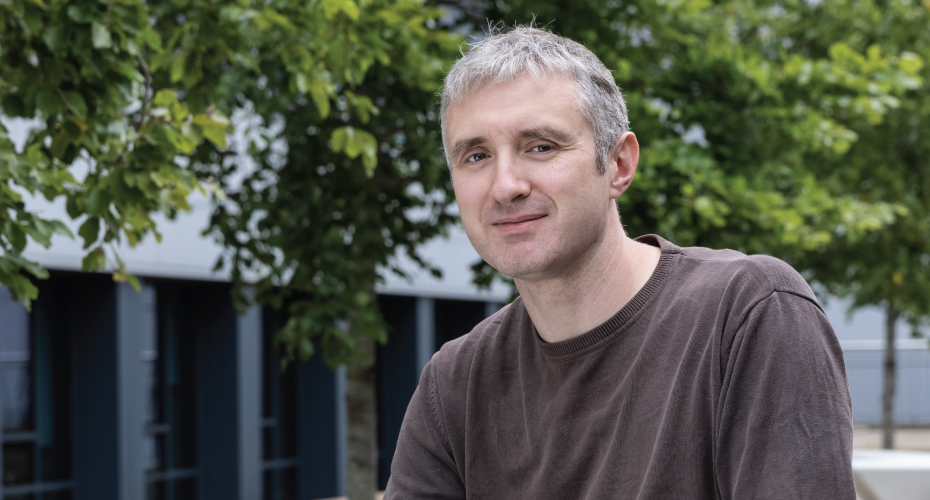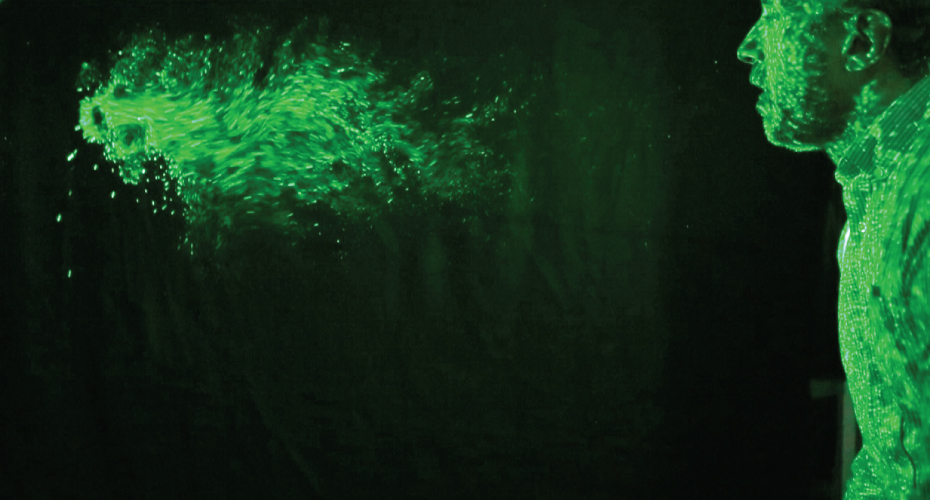Dr Kevin Nolan
Research
- Awards and Prizes
- Research Themes
- Research Institutes
- Research Centres
- Spin Out Activity
- Technology Transfer
- Industry Collaborations
- Entrepreneurship Training
- The UCD STEM Challenge Fund
- Impact Showcase
- Will Dimond & Marcus Donaghy
- Dr Oliver Kinnane
- Dr Elizabeth Shotton
- Professor Madeleine Lowery
- Dr Simon Kelly
- Dr Eoin O’Cearbhaill
- Professor Francis Butler and Dr Kevin Hunt
- Professor Paula Bourke
- Professor Aoife Gowen
- Professor Da-Wen Sun
- Dr Fionnuala Murphy
- Dr Tom Curran
- Dr Michael Long
- Dr Yaqian Zhao
- Dr Sarah Cotterill
- Dr Fiachra O’Loughlin
- Professor Eugene O’Brien
- Dr Shane Donohue
- Professor Eoin Casey
- Dr Philip Donnelan
- Professor Niall English
- Dr Mohammad Reza Ghaani
- Dr Elena Blokhina
- Dr Damian Flynn
- Professor Andrew Keane
- Professor R. Bogdan Staszewski
- Dr Le-Nam Tran
- Professor Eoin O'Neill
- Dr. Liana Ricci
- Dr Aisling Ní Annaidh
- Professor Lizbeth Goodman
- Dr Kevin Nolan
- Dr. Nan Zhang
- Dr Francesco Pilla
- Professor Mark Scott & Dr Michael Lennon
- Global Impact
- Postgraduate Student Opportunities
- 2024 STEM Symposium
- Wall of Frames 2023
- Smurfit Kappa Newman Fellowship Award
- ERC Grants
Helping People Understand and Mitigate the Spread of Aerosol-Born Infections

Dr Kevin Nolan - UCD School of Mechanical and Materials Engineering
A request in April 2020 to deploy a long-established optical technique to identify gas flows and the spread of aerosols in surgery opened up an entirely new avenue of research for Dr Kevin Nolan, whose primary interest is in studying the flow of liquids and gases – fluid dynamics. Initially the new research focused on identifying the potential spread of the COVID-19 virus in clinical procedures and therapy settings. More recently, still related to the spread of viral infection, it has expanded to encompass collaboration with manufacturers of air filtration equipment on how it can be used in various settings and has also led to his involvement in the development of new European standards for face coverings used in community settings.
“We’re talking about using IOT to measure air quality, using sensors almost like a real time indoor weather prediction”
Seeing is Believing
Dr Nolan was first approached by Professor Ronan Cahill, Professor of Surgery at the Mater Hospital, after he had seen on the internet work conducted by a university in Holland using the Schlieren optical technique to identify gas and aerosol leaks in surgery. Professor Cahill and his colleagues wanted to find ways in which the spread of an aerosol-born virus, such as COVID-19, in an operating theatre could be identified and then eliminated. They hoped this would enable surgeons to resume the range of procedures being severely restricted by the pandemic.
Keen to play his part in the emerging national emergency, Dr Nolan brought large and cumbersome Schlieren equipment, which had been built to help him in his research while at Bell Labs Ireland into how to keep computer and telecommunications equipment cool, and set it up in a theatre in the hospital.

Schlieren makes small changes in the refractive index of air visible to the human eye and provides, for example, striking imagery of airflows – including the human breath. It therefore reveals the air currents containing liquid droplets, or aerosols. The value of the technique as a means of demonstrating the potential spread of the virus in the human breath was immediately recognised by Professor Cahill and extensive use was made of the Schlieren technique to demonstrate to the public, via the media, what happens to the human breath when appropriate COVID-19 protocols, such as coughing into an elbow, are employed.
Subsequently other health professionals sought Dr Nolan’s help in addressing their particular challenges. These included an important investigation of the efficacy of placing a clear plastic box over a patient’s head and shoulders prior to intubation in an effort to reduce the risk of infection for medical staff. This work, reported in a paper published in the British Journal of Anaesthesia in May 2020, was cited the following month in two studies undertaken by researchers in Australia, following which, in August, the US FDA withdrew approval it had granted in May for use of the “intubation box”.
Dr Nolan also participated in an investigation of CO2 leakages during laparoscopy and in an investigation, using hospital staff volunteers, of the aerosol spreading risks associated with the provision of high-flow nasal oxygen given to COVID-19 patients.
He was also invited to work with ophthalmologists and ENT specialists seeking the best ways to use PPE when working with patients, with physiotherapists and speech & language therapists keen to get back working safely with their patients and with periodontists from Trinity College Dublin researching aerosol generation during dentistry.
Arising from this extensive body of work, Dr Nolan was also invited to contribute his technical expertise in establishing the effectiveness of novel face covering designs produced in collaboration with NUI Galway. This work will combine the Schlieren technique with 3D mapping of volunteer faces to determine effect ways to reduce outward leaks such those which can fog up the wearer’s glasses.
The huge significance of this work at a critical time for patients, clinicians and medical equipment manufacturers, not just in Ireland but further afield, too, has been widely recognized. As Professor Conan McCaul, a consultant anaesthetist at Dublin’s Rotunda and Mater hospitals observed: “Dr Nolan’s work has had immediate and direct clinical impact. It has informed design of medical equipment and has been highly informative regarding patient and personnel protection from airborne viral transmission. It has also enhanced public awareness of how COVID is transmitted and the need to socially distance.”
From Operating Theatre to World Stage
While the Schlieren technique has proved useful in showing gas flow patterns, it cannot show individual aerosol particles. Continuing his research in this area, Dr Nolan is now using a laser that passes through a vibrating mirror to illuminate a region of flow around a patient or object to reveal the aerosol contained within an airflow.
Combining these two tools, Dr Nolan is once again working with Professor Cahill and Professor McCaul in a further investigation into the leaking of aerosols from oxygen masks. This has provided practical, authentic opportunities for final year students to work with the data at a time when their access to laboratory work has been constrained.
Awareness of his work in this field has also drawn interest from industry. This includes a number of manufacturers of air purifiers and HEPA filters keen to discover how their devices can best be deployed in different settings, from surgical theatres and waiting rooms to classrooms and offices. “While there has been much discussion of late about the number of air changes in a room per hour, that assumes everything that comes into the room goes out,’ Dr Nolan says. “But this is not the case because of pockets or dead spots.”
So in the latest phase of research Dr Nolan and his team are trying to improve the criteria being used, looking at different shapes and sizes of room and the size and positioning of air purifiers required to eliminate these dead spots.
Dr Nolan is also in discussion with the large IT services and products company Cisco Systems about the potential use of Internet Of Things (IOT) sensors and Big Data to leverage their own technology and to enable their staff return safely to the office. ‘We’re talking about using IOT to measure air quality, using sensors almost like a real time indoor weather prediction,” Dr Nolan says.
As a result of his widely recognised work in identifying sources and dispersal of potentially virus-carrying aerosols, Dr Nolan was invited to work with a team, led in Ireland by the National Standards Authority of Ireland, advising on a new EU draft standard for community face coverings. It is hoped this will come up with improved designs for coverings that behave more consistently. Working in collaboration with NUI Galway, Dr Nolan is hoping that further research will identify designs that will be more effective in limiting leakages, particularly around the nose area, and reduce the common problem of spectacles “fogging up”.
Irish mask manufacturers have volunteered to build standards compliant versions when prototype designs have been created and these will be tested in the lab by Mater Hospital volunteers. “We will see how the interventions work with different shapes of noses and face contours and select the best solutions. We will propose these for inclusion in the standard and we hope this practical research will be one of Ireland’s contributions to making masks better,” Dr Nolan says.
This research work is also beginning to feed back into Dr Nolan’s primary area of interest in fluid dynamics. “We have been doing a lot of Computational Fluid Dynamics work with students. This is a very powerful tool that lets us model the full 3D flow. But the drawback is that these tools are very difficult to use. Such tools are not designed for amateurs but for deep domain experts. So we need robust, easy to use tools that will also work quickly – for example in modelling airflows in a room – and that is something that we are now beginning to think about,” Dr Nolan says.
Research References
- Cahill, R.A., Dalli, J., Khan, M., Flood, M. and Nolan, K., 2020. Solving the problems of gas leakage at laparoscopy. The British Journal of Surgery.
- Dalli, J., Khan, M.F., Marsh, B., Nolan, K. and Cahill, R.A., 2020. Evaluating intubation boxes for airway management. British Journal of Anaesthesia.
- Dalli, J., Khan, M.F., Nolan, K. and Cahill, R.A., 2020. Laparoscopic pneumoperitoneum escape and contamination during surgery using the Airseal Insufflation System–a video vignette. Colorectal Disease.
- McInerney, N., Gilligan, C., Manojlovich, L., Khan, M.F., Nolan, K. and Cahill, R.A., 2020. Airflow during clinical examinations with and without protective face masks. British Journal of Surgery.
- Dalli, J., Khan, M.F., Nolan, K. and Cahill, R.A., 2020. Gas leaks through laparoscopic energy devices and robotic instrumentation–a video vignette. Colorectal Disease.
Media and Social Media
- The science behind the effectiveness of face masks, The Irish Times.
- Can businesses survive the two metre social distance rule? RTE Prime Time.
- Study Shows Importance of Social Distancing, Wexford People and Gorey Guardian.
- Airflow video shows how easily coronavirus can be spread by coughing, Medical Express, David Kearns, UCD.
- Coughing video reveals the best face masks to prevent spread of coronavirus, The Irish Sun.
- Mater Misericordiae University Hospital Surgery YouTube Channel.
- UCD COVID-19 Rapid response.
Acknowledgements
- European Commission H2020 SC1 - Health demographic change and wellbeing award registered 2020 for the project entitled ‘Controlling viral aerosols in COVID-19 and beyond (PORSAV)’
- Mater Misericordiae University Hospital